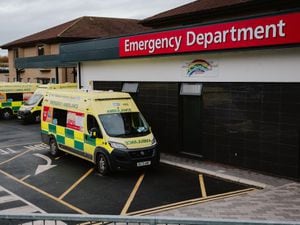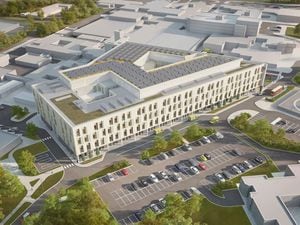Plans drawn up to solve Shropshire's hospital and ambulance crisis
NHS bosses have outlined plans to tackle the Shropshire's health crisis, warning "the current model of delivery is under pressure and is not sustainable".

The plans will be discussed at a meeting of Shropshire Council's Health Overview Scrutiny Committee on Tuesday, and come amid major strain on the local hospitals and the ambulance service.
Recent months have seen significant increases in the number of patients waiting outside hospitals in ambulances to be handed over, while wait times at A&Es in Shrewsbury and Telford have also risen.
Hospitals themselves have also struggled to discharge medically healthy patients because of a lack of community beds available to look after them.
In recent days the Shropshire Star revealed how a grandfather waited around four hours for an ambulance while having a suspected heart attack, only to suffer a cardiac arrest when he finally arrived at hospital.
The incident is one of a series which have sparked major concerns over the state of the health service in the county.
Sam Tilley, director of urgent and emergency care and planning at Shropshire, Telford & Wrekin Integrated Care System (ICS), will update councillors on both plans to prepare for winter, and to tackle the issues facing the county's A&E departments.
Councillors will be told that the plans focus on three main areas – pre-hospital, hospital improvement and flow, and discharge – and include a number of projects.
A report from the Shropshire, Telford & Wrekin Integrated Care System (ICS), outlines the state of current emergency healthcare and the need for improvements.
It says: "The current model of delivery is under pressure and is not sustainable. High demand is impacting on responsiveness, risk to patient safety and patient outcomes.
"The challenges regarding hospital flow have led to significant waits for admission in the emergency departments (EDs – known as A&E), with over-12-hour length of stay increasing significantly.
"At all acute hospital sites, increasing numbers of patients identified as medically fit for discharge and have no criteria to reside.
"Ultimately, this results in ambulance handover delays at the EDs, where staff cannot accommodate incoming ambulance conveyances. Consequently, ambulances queue outside the EDs.
"At present, the turnaround time for ambulance handovers is amongst the worst nationally, with instances where patients have waited over 12 hours outside the hospital."
Ambulance chiefs have said in recent weeks that patients are coming to harm "every day" because of the inability to get to them in time.
Councillors will be told that plans for the pre-hospital include more efforts to identify health issues and prevent the need for people to go for emergency treatment, as well as looking at alternatives to ambulance staff bringing patients to A&Es at Shrewsbury and Telford.
Hospital pressure could be relieved by creating direct routes for treatment where people with certain health problems would be sent to a specific areas of the hospital, to reduce waits in A&E.
The Royal Shrewsbury Hospital will have a re-configured floor-plan to get people through A&E more quickly, while a 32-bed ward is being created to support the elective surgery recover programme.
Plans are also in place to bring discharges forward to earlier in the day to reduce bottlenecks in the A&E.
Looking at discharge issues, work will take place to look at the number of beds available in the community.





